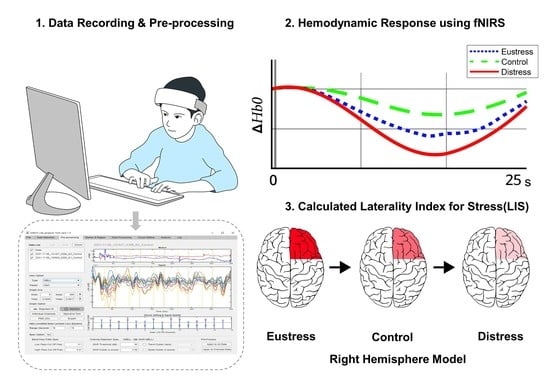Subdividing Stress Groups into Eustress and Distress Groups Using Laterality Index Calculated from Brain Hemodynamic Response
Abstract
Share and Cite
Bak, S.; Shin, J.; Jeong, J. Subdividing Stress Groups into Eustress and Distress Groups Using Laterality Index Calculated from Brain Hemodynamic Response. Biosensors 2022, 12, 33. https://doi.org/10.3390/bios12010033
Bak S, Shin J, Jeong J. Subdividing Stress Groups into Eustress and Distress Groups Using Laterality Index Calculated from Brain Hemodynamic Response. Biosensors. 2022; 12(1):33. https://doi.org/10.3390/bios12010033
Chicago/Turabian StyleBak, SuJin, Jaeyoung Shin, and Jichai Jeong. 2022. "Subdividing Stress Groups into Eustress and Distress Groups Using Laterality Index Calculated from Brain Hemodynamic Response" Biosensors 12, no. 1: 33. https://doi.org/10.3390/bios12010033
APA StyleBak, S., Shin, J., & Jeong, J. (2022). Subdividing Stress Groups into Eustress and Distress Groups Using Laterality Index Calculated from Brain Hemodynamic Response. Biosensors, 12(1), 33. https://doi.org/10.3390/bios12010033






